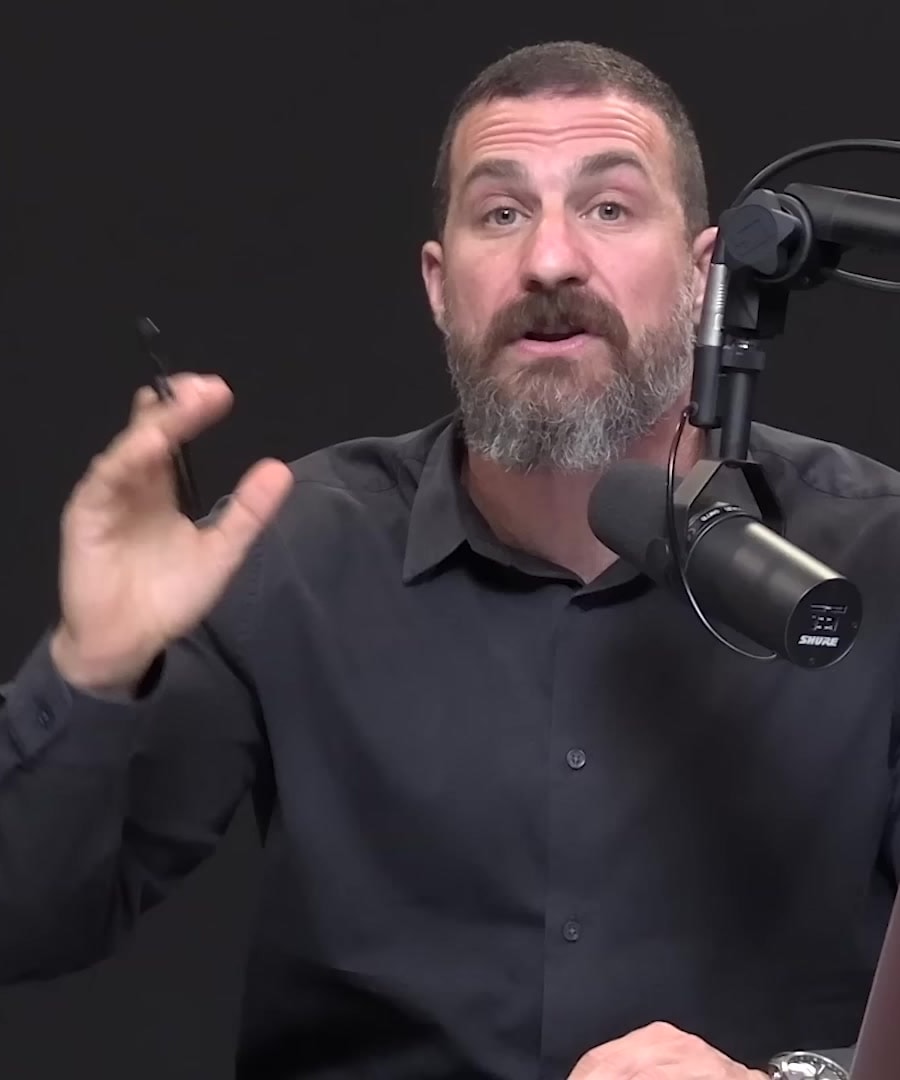Is happiness something that can be long-lasting, or does it only happen in bursts? Also what intrinsically causes it, and can it be faked through artificial means?
Currently, there are no specific clips available that directly address the nuanced questions about happiness from the Huberman Lab data. However, I encourage you to explore episodes of the , as they frequently discuss aspects of neurobiology that could relate to topics like happiness, well-being, and neural mechanisms involved.
For detailed answers, you might consider listening to episodes that dive into the brain's reward systems, dopamine pathways, and psychological resilience, as these topics often intersect with the concept of happiness and emotional states.
RELATED QUESTIONSWhat intrinsically causes happiness?
Currently, there are no specific clips available that detail the intrinsic causes of happiness. However, insights into happiness often relate to discussions on the brain's reward systems, neurotransmitters like dopamine and serotonin, and overall mental well-being.
To truly understand the intrinsic causes of happiness, exploring episodes of the that discuss brain functions, reward systems, and emotional health may provide valuable context and understanding.
RELATED QUESTIONSIs happiness long-lasting or temporary?
There are no specific clips available that directly address whether happiness is long-lasting or temporary.
The duration of happiness can be influenced by various factors, including genetic makeup, life circumstances, and individual practices like mindfulness and gratitude. For more detailed insights, exploring episodes of the that delve into emotional and mental health topics may provide further understanding.
RELATED QUESTIONSHow can one enhance their happiness?
Sources:
Enhancing happiness involves a combination of meaningful activities, social connections, and self-care practices. According to , the key strategies include:
-
Natural vs. Synthetic Happiness:
- Natural happiness stems from achieving something through effort or receiving it.
- Synthetic happiness is derived internally, such as from social connections or focusing on present activities. Both types require attention and purposeful engagement 1.
-
Meaning and Connection:
- Finding meaning in activities and establishing deep social connections is crucial. Techniques like eye contact and presence in conversations can enhance these connections 2.
- Social interactions, even brief ones, and activities such as prosocial behavior (e.g., giving money or time) significantly boost happiness 2.
-
Physical Health and Buffering Stress:
- Maintaining physical health and having a financial buffer to reduce anxiety from uncertain circumstances significantly contribute to well-being. Ensuring financial security to cover living expenses and create some buffer can help alleviate stress 2.
-
Attention and Meditation:
-
Social Connection through Pets:
- Interactions with pets can have significant prosocial and happiness-enhancing effects, even if the interactions are brief 5.
A holistic approach encompassing these strategies can lead to sustained and enhanced happiness. emphasizes creating a "toolkit" combining social connection practices, physical health management, and regular attention exercises to maintain high levels of happiness 4.
RELATED QUESTIONS-
Is there a neural basis for happiness?
Sources:
The neural basis for happiness is multifaceted and involves various neurotransmitters, neurocircuits, and psychological factors. According to :
-
Neurochemical Factors:
- There's no single chemical signature for happiness. Instead, a combination of neuromodulators like dopamine, serotonin, and catecholamines (dopamine, epinephrine, norepinephrine) play a role.
- Elevated levels of dopamine and serotonin generally correlate with higher mood and a sense of possibility, while low levels can lead to diminished mood and fewer episodes of happiness 1.
-
Neural Circuits:
- The brain has parallel pathways that contribute to feeling good or less good about things. Positive psychology research has elucidated neural circuits associated with happiness, gratitude, and pro-social behavior 2.
- Certain practices, such as gratitude, can shift the balance in these circuits towards increased pro-social feelings and away from defensive, anxiety-based responses. Regular gratitude practices help stabilize these effects and can enhance overall well-being 3.
-
Situational and Synthetic Happiness:
- Happiness can be "natural," stemming from achieving something through effort or "synthetic," which involves creating happiness through mindset and social connectivity. Both types require specific neurochemical and environmental conditions 4.
-
Meaning and Connection:
- The two core components of happiness are meaning and connection. Meaning in activities, combined with strong social connections, underpins our happiness. Tools to enhance connection include activities like giving time or money, maintaining eye contact, and being present in conversations 5.
Understanding and leveraging these neural and psychological substrates can help enhance overall happiness by creating conditions favorable to positive neurochemical states and strong social bonds.
RELATED QUESTIONS-
Is happiness something that can be long-lasting, or does it only happen in bursts? Also what intrinsically causes it, and can it be faked through artificial means?
- RELATED QUESTIONS
What intrinsically causes happiness?
- RELATED QUESTIONS
Is happiness long-lasting or temporary?
- RELATED QUESTIONS
How can one enhance their happiness?
- RELATED QUESTIONS
Is there a neural basis for happiness?
- RELATED QUESTIONS








